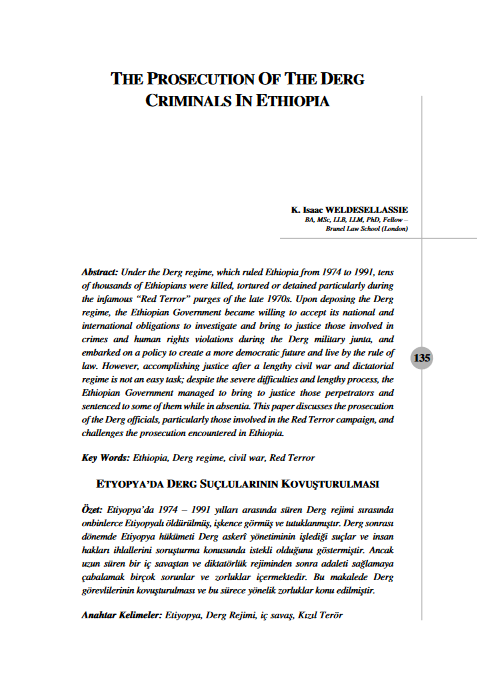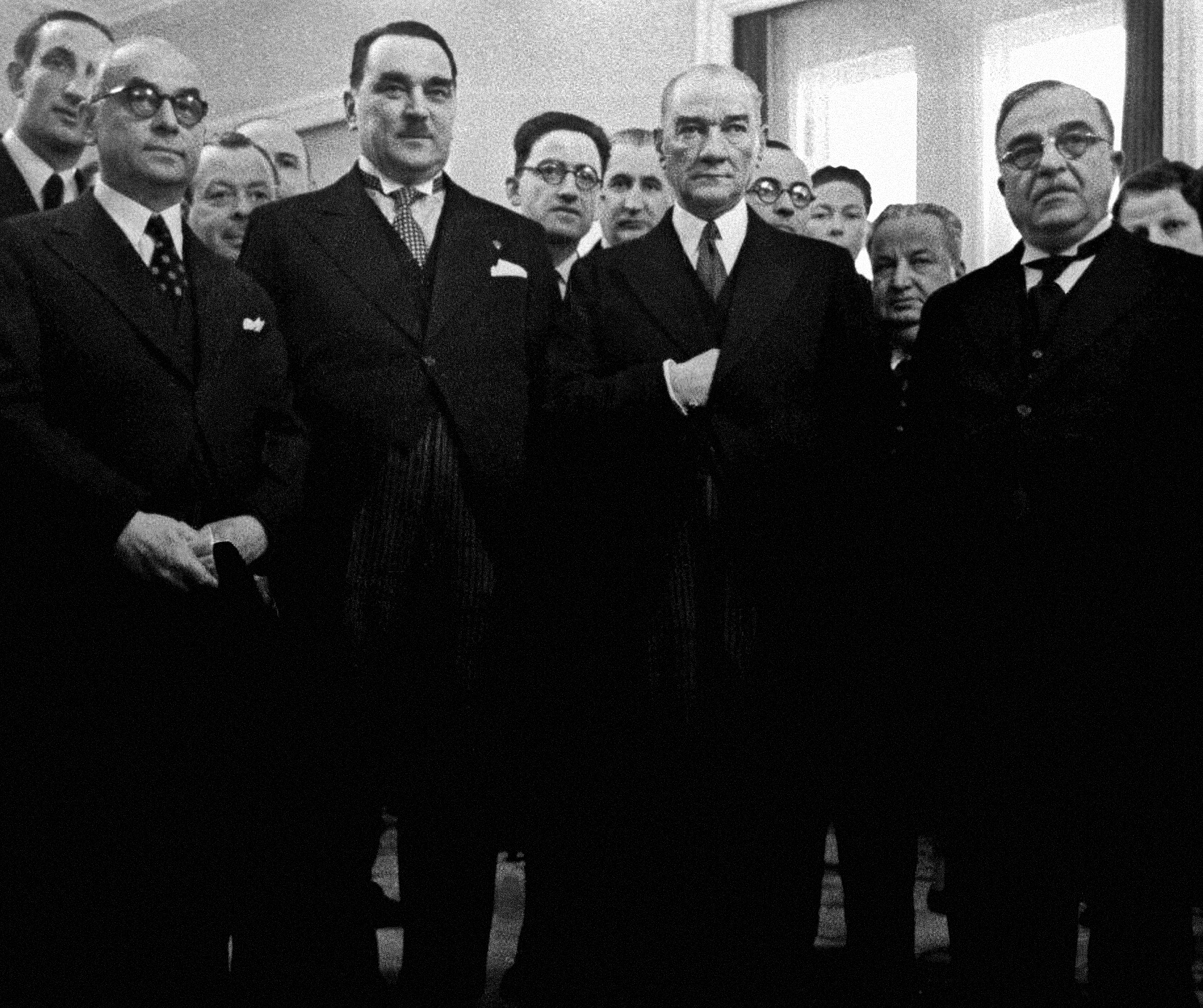
Introduction
In our recent analysis titled “Turkey Assumed the Chairmanship-In-Office of the South East Europe Cooperation Process (SEECP)”, we referred to the 1934 Pact of Balkan Entente (shortly 1934 Balkan Pact) and described this treaty as the precursor of the South-East Europe Cooperation Process [1]. In this context, we emphasized that the Balkans is the core of the “South East Europe” sub-region of Europe. Geographically, this subregion is fundamentally and primarily coterminous with the Balkan Peninsula, hence, is historically known as the Balkans. Historian Maria Todorova, who is well known for her work on the history of the Balkans, in titled book “Imagining the Balkans”, elaborately elucidates the Turkish roots of the toponym “Balkans” and explains how the terms of “Southeastern Europe” and “Balkans” are used interchangeably [2].
In our above mentioned analysis, we called attention to the point that SSECP is considered as “the only homegrown initiative in the region” and has been characterized as a “regionally owned” process [3]. Although the 1934 Balkan Pact was mainly addressing the security concerns of the Balkan countries in 1930s, the same qualification of “regional ownership” could be attributed to this treaty. In order to better evaluate the “regional ownership” character of and reasons for the signature of the Balkan Pact of 1934, it is necessary to appraise the political and security environment in Europe and in the Balkans in 1930s and to understand the nature and political climate of the time.
Brief appraisal of the political and security environment in Europe and in the Balkans in1930s
There are six main peace treaties that ended the First World War as a result of the Paris Peace Conference of 1919-1920. These are Versailles with Germany, Saint-Germain-en-Laye with Austria, Neuilly with Bulgaria, Trianon with Hungary, Sèvres with the Ottoman Empire, and lastly Lausanne with Turkey. Following the Paris Peace Conference, the League of Nations (LoN) was founded on 10 January 1920 with the objective of “maintain[ing] universal peace within the framework of the fundamental principles of (founding) Pact accepted by its Members and to develop cooperation among nations and to guarantee them peace and security” [4]. LoN, in 1923, prepared the Treaty of Mutual Assistance and submitted it for the approval of the member States. Accordingly, if one State attacked another, the League of Nations Council would decide who was the aggressor within four days, and other States would assist the attacked side. However, due to different views of the member States, this attempt to provide security remained inconclusive. Afterwards, in 1924, the League of Nations adopted the Geneva Protocol on the Pacific Settlement of International Disputes proposing compulsory arbitration of disputes and created a method to determine the aggressor in international conflicts. The protocol envisaged submitting all legal disputes between nations to the World Court and called for a disarmament conference. Nevertheless, this initiative failed as well [5].
In such a period when the LoN failed to protect international peace and proved to be ineffective, upon the initiative of the then German Foreign Minister Gustav Stresemann,
“The representatives of the German, Belgian, British, French, Italian, Polish, and Czechoslovak Governments [met] at Locarno (Switzerland) from the 5th to 16th October 1925, in order to seek common agreement means for preserving their respective nations from the scourge of war and for providing for the peaceful settlement of disputes of every nature which might eventually arise between them” [6].
According to the Final Protocol of the Locarno Conference, they gave their approval to the draft treaties and conventions which were considered to be interdependent.[7] These instruments were formally signed in London on 1 December 1925.
The basic meaning of the web of Locarno treaties was that Germany refused to use force to change the western borders and agreed to follow the arbitral decision on the eastern borders. The UK basically agreed to provide military support to Belgium and France, but did not provide the same guarantee for Poland and Czechoslovakia. France made certain commitments to Poland and Czechoslovakia. Meanwhile, France and Germany normalized their relations. Germany, for the first time after the war, gained back the major state status in Europe. The Locarno treaties eventually prepared the ground for reconciliation between Germany and her neighbors Belgium and France and paved the way for Germany’s entry into the League of Nations in 1926. However, these arrangements made central and eastern parts of Europe open to revisionist initiatives and in some sense left these regions to their own destiny, including the Balkans. At this point, it is worthwhile to mention that because of their contributions to the negotiations of Locarno treaties, British Foreign Minister Austen Chamberlain was awarded the Nobel Peace Prize in 1925. Afterwards, German and French Ministers of Foreign Affairs Gustav Stresemann and Aristide Briand were also jointly awarded the same prize in 1926 [8].
Seeking cooperation in the Balkans and the path to the Balkan Pact
As mentioned earlier, after the First World War, the idea that world peace could only be protected by the establishment of a common security system was dominant and the LoN was the most important means in this direction. However, it soon became apparent that LoN alone failed to provide security to all states. The most obvious example of this is the 1925 Locarno treaties. Locarno Treaties were disrupted the status quo created after the Paris Peace Conference and gave the way to the emergence of revisionist states like Germany and Italy in the Western Europe and Bulgaria in the Balkans [9]. It should be mentioned in this context that Bulgaria, as a result of Treaty of Neuilly of 7 November 1919, lost considerable territory to Yugoslavia, Romania, and Greece. These losses deprived Bulgaria of the direct access to the Aegean Sea since she gave Western Thrace to Greece, which Bulgaria had gained under the terms of Treaty of Bucharest of 1913 reflecting the end result of Second Balkan War [10]. It is worth remembering that Western Thrace has a significant Turkish-Muslim population.
As a result of these developments in the Western Europe that overlooked the Southeastern Europe region, the Balkan countries started to search for regional approaches to their security needs through bilateral and regional multilateral arrangements. In this context, rapprochement occurred between rival parties of the First World War. Among these, the most important one was the Greek-Turkish rapprochement. We can briefly summarize the phases of this rapprochement process in a chronological order as follows:
- Following the Lausanne Treaty, the mandatory population exchange created the “Established” (établi) problem. The two countries had not reached an agreement on who would be considered ‘etabli’ in terms of the Treaty. The problem was solved in phases. First phase was the signing of the Ankara Treaty on June 21, 1925 [11].
- The second treaty on the same dispute was signed in Athens on December 1, 1926
- Greek Prime Minister Eleftherios Venizelos, in August 1928, wrote a cordial letter to the Turkish Prime Minister İsmet İnönü proposing a treaty of friendship, non-aggression, and arbitration [12].
- In his letter to Venizelos on 27 September 1928, İnönü underlined that Venizelos’ letter was the beginning of a new and sincere friendship in the history of Turkish-Greek relations [13].
- The political and economic questions between Turkey and Greece arising from exchange of populations were settled through the Ankara Convention of 10 June 1930.[14]
- At Inönü’s invitation, Venizelos visited Ankara and Istanbul in October 1930.
- On 30 October, the two countries signed a Treaty of Friendship, Neutrality, Mediation and Arbitration, together with commercial and other agreements.
- The reconciliation was continued with a return visit by Inönü to Athens on 3-6 October 1931 [15].
- In 1932, Venizelos resigned as Prime Minister when his policies failed to produce the expected political and economic results. Afterwards, on 14 September 1933 Greek Prime Minister Panagis Tsaldaris visited Ankara. İnönü and Tsaldaris signed in Ankara the Cordial Agreement between Turkey and Greece. This ten-year agreement was designed to ward off any threat might come from revisionist Bulgaria [16].
It is worth mentioning in the context of the Greek-Turkish rapprochement that Venizelos nominated Mustafa Kemal Atatürk for the Nobel Peace Prize in 1934 [17]. In his letter dated 12 January 1934 to the President of the Norwegian Nobel Committee, Venizelos stated that “This rapprochement, which shows that even peoples divided by the most serious differences can come closer to each other when they become filled with the sincere desire for peace, was beneficial both for the two countries involved and for keeping the peace in the Near East… Thus, I have the honour, as the leader of the Hellenic Government in 1930, when the signature of the Greek-Turkish pact marked a new era in the march of the Near East towards peace, to propose Moustafa Kemal Pasha as a candidate for the distinguished honour of the Nobel Peace Prize” [18]. According to the Nobel Prize Nomination Archive website, Atatürk was in the short list of the Nobel Peace Prize in 1934. The comment section of the said Archive includes the following explanation:
“Kemal was on the short list, but no evaluation was written. It was supposed to be added later, but no evaluation on him was added. In 1934 Mustafa Kemal was given the name Atatürk (Father of the Turks) by the Turkish national assembly” [19].
The Balkan Conferences (1930-1933) and the Balkan Pact of 1934
The origin of the Balkan Conferences which paved the way for the conclusion of the 1934 Balkan Pact goes back to the twenty-seventh Congress of the International Peace Bureau (IPB) held at Athens, 6-10 October 1929. According to the website of the International Peace Bureau,
“The IPB was founded in 1891-92, as a result of consultations at the Universal Peace Congresses, large gatherings held annually to bring together the national peace societies that had gradually developed, mainly in Europe and North America, from the end of the Napoleonic Wars onwards. The representatives of the Peace Societies felt that the movement needed a permanent office to coordinate the activities of the national associations and to organize the Universal Peace Congresses. Thus was born the ‘Permanent International Peace Bureau’, as it was known (‘Permanent’ was later dropped from the title)” [20].
The third commission of the congress examined the special issue of the Balkan Union under the chairmanship of Alexandros Papanastasiou who served as the Prime Minister of Greece in 1924. Papanastasiou, in his speech, while explaining the difficulties of forming either a world federation or even a Union of Europe, said that;
“There would still be occasion to pursue its (the confederation’s) realization in a yet more limited region among the peoples of the Balkans… including Turkey. The destinies of these peoples and their vicissitudes have been similar or common; they have lived for centuries within the framework of the same political organization; they have similar habits and ideas and sufficiently common interests, in a word, they present numerous common elements which facilitate their union.”
This position met with agreement and he submitted on 9 October a resolution to the plenary session proposing annual Balkan conferences and asked the IPB to take the initiative in calling the first meeting. The Congress adopted the resolution by acclamation [21].
Invitations to this conference were sent out by the International Peace Bureau on 12 May 1930 to the Foreign Ministers of all six Balkan governments advising them that at the Athens Congress a sub-committee, composed almost exclusively of representatives of the Balkan countries, had been formed for the purpose of studying the question of the ways and means for encouraging and furthering a rapprochement between the 60 million people of Balkans who inhabited this part of Europe. The IPBP, in communicating the text of the resolution to the Foreign Ministers, suggested that if the proposal met with their approval, the Conference should be convened for October 1930, and be attended by representatives of all sides of the countries intellectual, with the proviso, however, that the delegates should attend in an unofficial capacity, without power to commit their Governments in any way. At the same time, it was pointed out that this Conference, though non-official, independent of and not engaging in any way the responsibility of the Governments, would, however, not be able to do without their support, either materially or morally, and the Governments ought to be represented by 'observers,' who would be in a position to keep the various Governments informed regarding the work, proposals and aims of the Conference [22]. The invitation also pointed out that “The Balkans will ceased to be neuralgic point of Europe only when, having understood that their interests will never be better protected than by themselves, they look only to themselves for remedies to the maladies from which they have suffered in the past” [23].
As a result of these preparatory work, the First Balkan Conference was held in Athens on 6-11 October 1930 and adopted a resolution proposing that the participants study a Balkan Pact on the basis of conciliatory relationships between the Balkan states. Additionally, the Conference decided for the preparation of a preliminary draft of a Balkan Pact. The task of preparing a draft Balkan Pact was delegated to a political commission under the presidency of M. Pop of Romania and Professor Spiropoulos, Dean of the Law Faculty of Salonica. At the Second Conference held in Istanbul on 20-26 October 1931, Spiropoulos' draft pact was discussed and it was decided that the definitive text of a Balkan Pact would be established at the Third Balkan Conference to be held in Bucharest. At the Third Balkan Conference which was held on 22-29October 1932, the Bulgarian delegates formally withdrew, having failed to persuade the Conference to grant priority to the minorities though they agreed to remain in the Conference as observer. The Fourth Balkan Conference met in Salonica on 5-11 November 1933 and adopted the Balkan Pact. Bulgarian government refused to join in the Balkan Pact in order not to accept the territorial status quo in the Balkans. Bulgaria, by way of rejecting to be a party to the Balkan Pact revealed her territorial claims regarding the Western Thrace and highlighted her continuing insistence on having an access to the Aegean Sea [24].
The official text of the “Pact of Balkan Entente” is in French, howeveri English translation included in the League of Nations Treaty Series was made by the Secretariat of the League Nations. The French and English texts included in the League of Nations Treaty Series is presented as annex below this analysis for the easy perusal [25].
The Pact consists of a short preamble and three articles. The preamble explains the main purpose of the contracting parties of the Pact as “Firmly resolved to ensure the observance of the contractual obligations already in existence and the maintenance of the territorial situation in the Balkans as at present established.” This short sentence explains the reason why Bulgaria abstained from joining the Balkan Pact. Articles shortly stipulate that four signatory countries “mutually guarantee the security of each and all of their Balkan frontiers”; “undertake not to embark upon any political action in relation to any other Balkan country not a signatory of the present Agreement without previous mutual consultation nor to incur any political obligation to any other Balkan country without the consent of the other Contracting Parties”, and the Pact is “open to any Balkan country whose accession thereto is favorably regarded by the Contracting Parties.” Annexed protocol, which is an integral part of the Pact, states in essence that the pact is not directed any state but also adds that the pact aims to guarantee the security of the several Balkan frontiers against any aggression on the part of any Balkan State. Consequently, if a signatory’s frontier not located in the Balkans comes under attack or if the attack originates from outside the Balkans, the pact will not be operative. However, if any Balkan states joins the attack of non-Balkan state, the provisions of the pact will become fully operational. In fact, all these provisions indicate that the pact was signed with a possible Bulgarian attack in mind [26].
Shortly after the Balkan Pact, on 2 November 1934, the parties to the Pact adopted the status of Balkan Entente Organization, instituting the Council of Ministers which would meet on twice a year and, when necessary, in a special session. Additionally, an Advisory Economic Council and a Special Committee charged with harmonizing legislation were established.
The Pact worked effectively until the Second World War, developing a common attitude on many issues and the last meeting of the Council of Ministers was held in February 1940, when Second World War broke out [27].
Thoughts on the toponym of the region: The Balkans versus South East Europe
For years, especially after the 1990s, the term “Balkans” has been associated with negative developments and a bias has formed against the term “Balkans”.This negative bias, in time, has turned into intentionally designed demonization of the region as a whole. In such an environment, even the name of the region that was used for centuries, and which reflects its Turkish heritage not only in the region but in Europe, was tried to be substituted with newly created toponyms. While there is no doubt that the main responsibility of the negativities attributed to the region are mainly incumbent upon the regional countries, it is not possible also to ignore the share of some Western European countries in the creation of these negativities. In this context, interventions to divide the region into geographical pieces and encouraging the fragmentation of some countries in the region should be remembered. In this context, it would be fair to comment that the Balkan region has been mostly considered by some Western European countries since the early twentieth century as the inferior "other" and has been treated as an unstable periphery unable to make decisions of its own especially in crisis situations.
Conclusion
In the introduction section above, we pointed out that SEECP is an initiative originating from the South East European region and is considered as a “regionally owned” initiative. Though the 1934 Balkan Pact was mainly designed for meeting the security needs of the Balkan countries, in a broad sense, it represented the will of the regional countries to cooperate for bringing stability to the Balkans. In fact, as noted above, within the framework of the Balkan Entente Organization, for fostering economic cooperation an Advisory Economic Council was established. The Statue of the Advisory Council was adopted in Ankara in 1934. Article 5 (a) of the Status envisages to address the question of the “intensification of the economic and commercial relations among the signatories of the Balkan Entente.” Article 5/b of the said Status refers to the “development of the means of inter-Balkan communications, especially those which, utilizing the Danube and Black Sea which will permit the facilitation of commercial exchanges of Balkan states and of Central Europe with Asia, as well as the other means of maritime communication.” The Status refers also to the possibility to create a Balkan Bank and addressing “general tourist traffic” [28]. These examples suggest that the 1934 Balkan Pact, in effect, had foreseen a more wide cooperation than the security and tried to address certain economic issues that could be considered quiet relevant for the present day.
“Charter on Good-Neighborly Relations, Stability, Security and Cooperation in South-Eastern Europe” of the SEECP stipulates its primary objective as “to strengthen the good-neighborly relations among all states in this region, for transforming this region into an area of peace, security, stability and cooperation” [29]. For attaining this objective, the SEECP Charter stipulates enhancement and promotion of political, security and economic cooperation. It is not possible to say that the primary objective of and the means employed for attaining this objective of the SEECP are different from the 1934 Balkan Pact. Besides, both of them are fundamentally "homemade" initiatives. In this context, the SEECP should be considered more than a “talk-shop” as representing the forum bringing together all the countries of the region of the Balkans/South East Europe under one umbrella without making discrimination among them.
As stated in one of the insightful articles about the Balkans penned back in the first years of this century,
“The region itself has supplied most of the evidence for this perception: there has been ample amount of tension and open or latent conflict from Bosnia-Herzegovina to Kosovo and Macedonia… However, neither the good-neighborly relations amidst conflictual environment, nor cases of collaboration for regional cooperation could receive half as much attention as did the conflicts and conflict-resolution efforts in the Balkans… Despite the legacy of Balkan Wars and some deeply conflictual relations in the Balkans, examples of good-neighbourliness and cooperation even in the past were not necessarily scarce in the region. The Balkan Conferences that started in 1930 were aiming at a loose federation of Balkan nations in economic, social, cultural, political and intellectual fields. The Balkan Pact of 1934 hence became a partial achievement of the Balkan Conferences since it was solely based on security considerations of the signatory states, Turkey, Greece, Romania and Yugoslavia“ [30].
However, as the article states, “the Balkans is not a region doomed to instability.” Like the 1934 Balkan Pact of the past, the SEECP is a good example that the region has the will and the potential to produce joint cooperative arrangements, platforms, and the regionally owned and led cooperation framework such as the Regional Cooperation Council.
.jpg)






*Photo: https://aws.amazon.com/tr/s3/
[1] Teoman Ertuğrul Tulun, “Turkey Has Assumed The Chairmanship-In-Office Of The South East Europe Cooperation Process (Seecp),” Center For Eurasian Studies (AVİM) 2020, no. 20 (July 17, 2020), https://avim.org.tr/en/Analiz/TURKEY-HAS-ASSUMED-THE-CHAIRMANSHIP-IN-OFFICE-OF-THE-SOUTH-EAST-EUROPE-COOPERATION-PROCESS-SEECP.
[2] Maria Todorova, Imagining the Balkans (New York: Oxford University Press, 2009), 21-38;161-183.
[3] “Relations with the Balkan Region,” Web Portal, Republic of Turkey Ministry of Foreign Affairs, 2011, http://www.mfa.gov.tr/relations-with-the-balkan-region.en.mfa.
[4] “History of the League of Nations (1919-1946)” (United Nations Office At Geneva), accessed August 1, 2020, https://www.unog.ch/80256EDD006B8954/(httpAssets)/36BC4F83BD9E4443C1257AF3004FC0AE/%24file/Historical_overview_of_the_League_of_Nations.pdf.
[5] Fahir Armaoğlu, 20. Yüzyıl Siyasi Tarihi (1914-1995), 23rd ed. (İstanbul: Timaş Yayınları, 2004), 86–87.
[6] “3. The Treaties Of Locarno 1925 Final Protocol Of The Locarno Conference,1925” (The Organisation Of Collective Self-Defence, October 16, 1925), https://www.fransamaltingvongeusau.com//documents/dl1/h2/1.2.3.pdf.
[7] Final Protocol enlists these instruments as Treaty between Germany, Belgium, France, Great Britain, and Italy
(Annex A); Arbitration Convention between Germany and Belgium (Annex B); Arbitration Convention between Germany and France (Annex C); Arbitration Treaty between Germany and Poland (Annex D); Arbitration Treaty between Germany and Czechoslovakia (Annex E). In addition to these draft treaties France, Poland, and Czechoslovakia have also concluded at Locarno draft agreements in order reciprocally to assure to themselves the benefit of the said treaties.
[8] “All Nobel Peace Prizes,” Web Portal, The Nobel Prize, 2020, https://www.nobelprize.org/prizes/lists/all-nobel-peace-prizes.
[9] Melek Fırat, “Yunanistanla İlişkiler,” in Türk Dış Politikası. Kurtuluş Savaşından Bugüne Olgular, Belgeler, Yorumlar, ed. Baskın Oran, 15th ed., vol. 1 (İstanbul: İletişim Yayınları, 2009), 350.
[10] Frank Maloy Anderson and Amos Shartle Hershey, Handbook for the Diplomatic History of Europe, Asia, and Africa, 1870-1914 (Washington, D.C.: Government Printing Office, 1918), 439–41, https://archive.org/details/handbookfordipl01hersgoog/page/n8/mode/2up?q=439.
[11] Onur Yıldırım, Diplomacy and Displacement: Reconsidering the Turco-Greek Exchange of Populations, 1922-1934, 1st ed. (New York: Routledge, 2006), 102-103;116-117.
[12] Ioannis D. Stefanidis, “Reconstructing Greece as a European State: Venizelos’ Last Premiership, 1928-32,” in Eleftherios Venizelos: The Trials of Statesmanship, ed. Paschalis M. Kitromilides (Edinburgh: The Edinburgh University Press, 2006), 221.
[13] Fırat, “Yunanistanla İlişkiler,” 345.
[14] Melek Fırat. Relations with Greece, p.208, in Turkish Foreign Policy 1919-2006 Facts and Analyses with Documents, Edited by Baskın Oran, Translated by Mustafa Akşin. The University of Utah Press, Salt Lake City 2010.
[15] Melek Fırat, “Relations With Greece,” in Turkish Foreign Policy, 1919-2006 : Facts and Analyses with Documents, trans. Mustafa Aksin, Accessed from http://nla.gov.au/nla.cat-vn5680539 (Salt Lake City: University of Utah Press, 2010), 208.
[16] Fırat, 210.
[17] Zafer Çakmak, “Venizelos’un Atatürk’üNobel Barış Ödülü’ne Aday Göstermesi,” Erdem 2008, no. 52 (2008): 91–110.
[18] E. K. Venizelos, “Nomination Letter by Eleftherios K. Venizelos for the Conferral of the Nobel Peace Prize upon Mustafa Kemal Pasha (Ataturk),” trans. Penny Pouliou, January 12, 1934, https://greekworldmedia.com/2017/03/19/nomination-letter-by-eleftherios-k-venizelos-for-the-conferral-of-the-nobel-peace-prize-upon-mustafa-kemal-pasha-ataturk/.
[19] “Nomination Archive,” Web Portal, The Nobel Prize, 2020, https://www.nobelprize.org/nomination/archive/show.php?id=7872.
[20] Rainer Santi, “Over a Century of Peace-Making” (International Peace Bureau, 1991), http://www.ipb.org/wp-content/uploads/2017/02/100-Years-of-Peacemaking-46pp.pdf.
[21] Robert Joseph Kerner and Harry Nicholas Howard, The Balkan Conferences And The Balkan Entente 1930-1935: A Study In The Recent History Of The Balkan And Near Eastern Peoples (Whitefish: Kessinger Publishing, LLC, 2010), 25.
[22] “The First Balkan Conference,” Bulletin of International News 7, no. 11 (November 20, 1930): 3–9.
[23] Kerner and Howard, The Balkan Conferences And The Balkan Entente 1930-1935: A Study In The Recent History Of The Balkan And Near Eastern Peoples, 26.
[24] Mustafa Türkeş, “The Balkan Pact and Itsimmediate Implications Forthe Balkan States, 1930–34,” Middle Eastern Studies 30, no. 1 (January 1, 1994): 123–44, https://doi.org/10.1080/00263209408700986.
[25] “Greece, Roumania,Turkey And Yugoslavia Pact of Balkan Entente, and Protocol-Annex. Signed at Athens, February 9th, 1934.” (League Of Nations, February 9, 1934), VOLUME CLIII-3514, https://treaties.un.org/doc/Publication/UNTS/LON/Volume%20153/v153.pdf.
[26] Fırat, “Relations With Greece,” 212.
[27] Fırat, 212.
[28] Kerner and Howard, The Balkan Conferences And The Balkan Entente 1930-1935: A Study In The Recent History Of The Balkan And Near Eastern Peoples, 236–37.
[29] “Charter On Good-Neighborly Relations, Stability, Security And Cooperation In South-Eastern Europe” (Regional Cooperation Council, February 12, 2000), https://www.rcc.int/files/user/docs/2013.10.03_CHARTER_SEECD.pdf.
[30] Şule Kut and N. Aslı Şirin, “The Bright Side of Balkan Politics: Cooperation in the Balkans,” in Is Southeastern Europe Doomed to Instability?: A Regional Perspective Hardcover, ed. Dimitri A. Sotiropoulos and Thanos Veremis, 1st ed. (New York: Routledge, 2002), 10–23.
© 2009-2025 Center for Eurasian Studies (AVİM) All Rights Reserved
No comments yet.
-
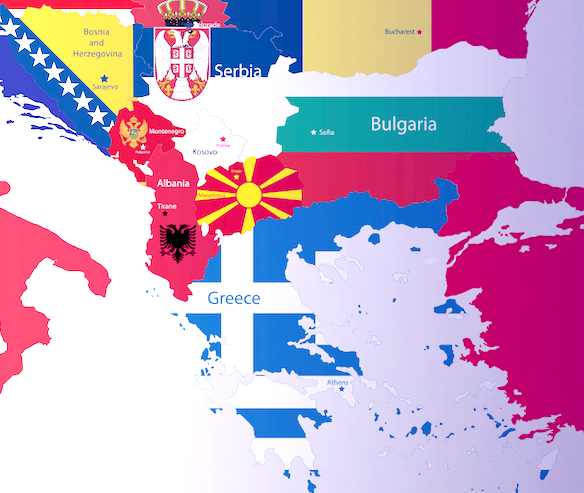 CHAILLOT PAPER ON BALKANS FUTURE: A CASE OF ILL-INFORMED LEADING THE ILL-INFORMED
CHAILLOT PAPER ON BALKANS FUTURE: A CASE OF ILL-INFORMED LEADING THE ILL-INFORMED
Teoman Ertuğrul TULUN 02.10.2018 -
 COVID-19 AND CORONA BONDS HAVE UNMASKED THE FRAGILITY OF THE EU
COVID-19 AND CORONA BONDS HAVE UNMASKED THE FRAGILITY OF THE EU
Teoman Ertuğrul TULUN 22.04.2020 -
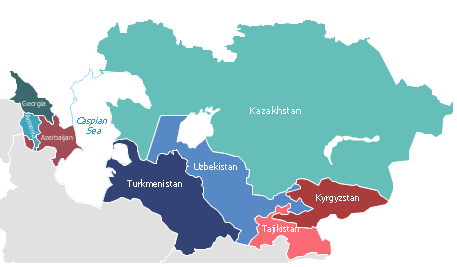 A QUARTER OF A CENTURY OF INDEPENDENCE OF CENTRAL ASIAN AND SOUTH CAUCASUS COUNTRIES: AN ECONOMIC SNAPSHOT AND PROSPECTS FOR THE FUTURE
A QUARTER OF A CENTURY OF INDEPENDENCE OF CENTRAL ASIAN AND SOUTH CAUCASUS COUNTRIES: AN ECONOMIC SNAPSHOT AND PROSPECTS FOR THE FUTURE
Teoman Ertuğrul TULUN 14.12.2016 -
 TAIWAN ELECTION 2020: MORE AMBITIOUS TAIWANESE IDENTITY AND DEVELOPING CONSTRUCTIVE APPROACHES
TAIWAN ELECTION 2020: MORE AMBITIOUS TAIWANESE IDENTITY AND DEVELOPING CONSTRUCTIVE APPROACHES
Teoman Ertuğrul TULUN 10.02.2020 -
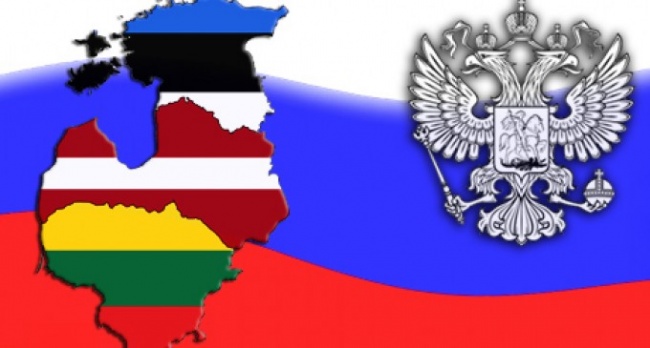 THE BALTIC COUNTRIES: 25 YEARS OF ACCOMPLISHMENT AND FEAR
THE BALTIC COUNTRIES: 25 YEARS OF ACCOMPLISHMENT AND FEAR
Teoman Ertuğrul TULUN 07.12.2016
-
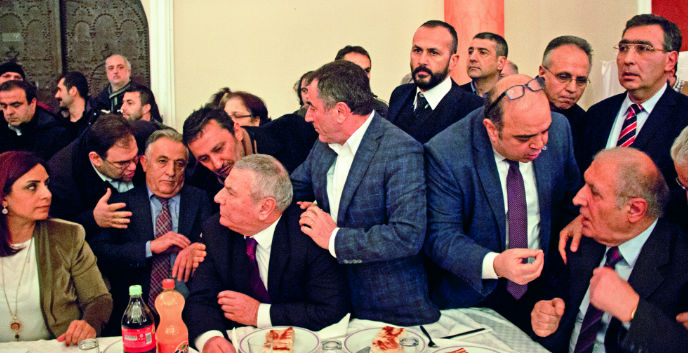 THE DISPUTE OVER THE ELECTION OF THE ARMENIAN PATRIARCH OF ISTANBUL CONTINUES
THE DISPUTE OVER THE ELECTION OF THE ARMENIAN PATRIARCH OF ISTANBUL CONTINUES
Mehmet Oğuzhan TULUN 27.02.2017 -
 BREXIT: NEW PARADIGM SHIFT FOR GLOBALIZATION AND SIGNAL FOR NEW WORLD ORDER
BREXIT: NEW PARADIGM SHIFT FOR GLOBALIZATION AND SIGNAL FOR NEW WORLD ORDER
Teoman Ertuğrul TULUN 27.01.2017 -
 SOME CRITICISMS REGARDING PROF. DR. ERIK-JAN ZÜRCHER’S CENTENNIAL STATEMENT
SOME CRITICISMS REGARDING PROF. DR. ERIK-JAN ZÜRCHER’S CENTENNIAL STATEMENT
Mehmet Oğuzhan TULUN 21.04.2015 -
 THE VISA OBSTACLE FOR TURKISH CITIZENS AND THE EU'S JUSTIFICATIONS
THE VISA OBSTACLE FOR TURKISH CITIZENS AND THE EU'S JUSTIFICATIONS
Hazel ÇAĞAN ELBİR 10.10.2024 -
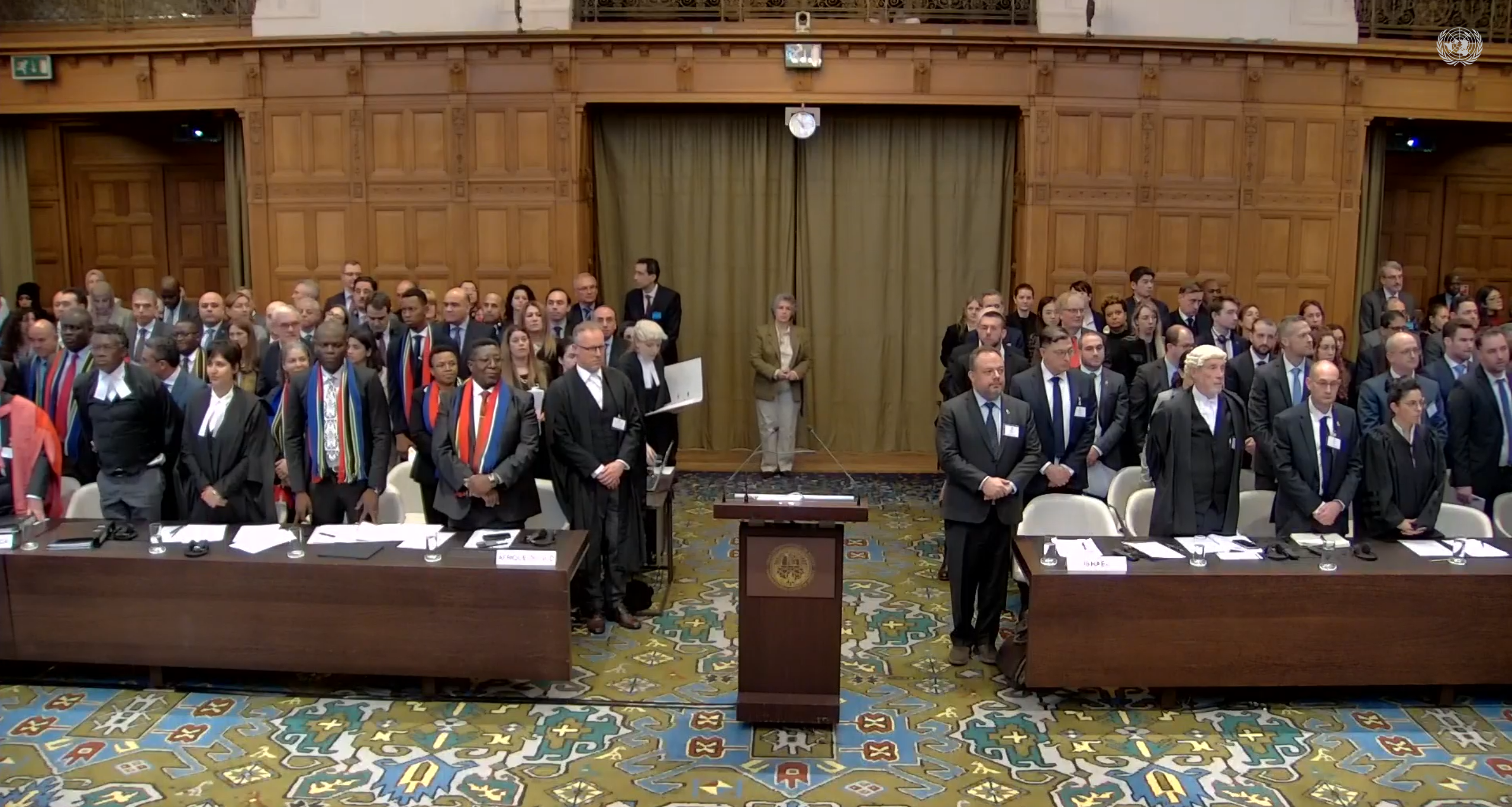 ISRAEL: HAS THE VICTIM OF GENOCIDE BECOME THE PERPETRATOR OF THE SAME CRIME?
ISRAEL: HAS THE VICTIM OF GENOCIDE BECOME THE PERPETRATOR OF THE SAME CRIME?
Mehmet Oğuzhan TULUN 31.01.2024
-
25.01.2016
THE ARMENIAN QUESTION - BASIC KNOWLEDGE AND DOCUMENTATION -
12.06.2024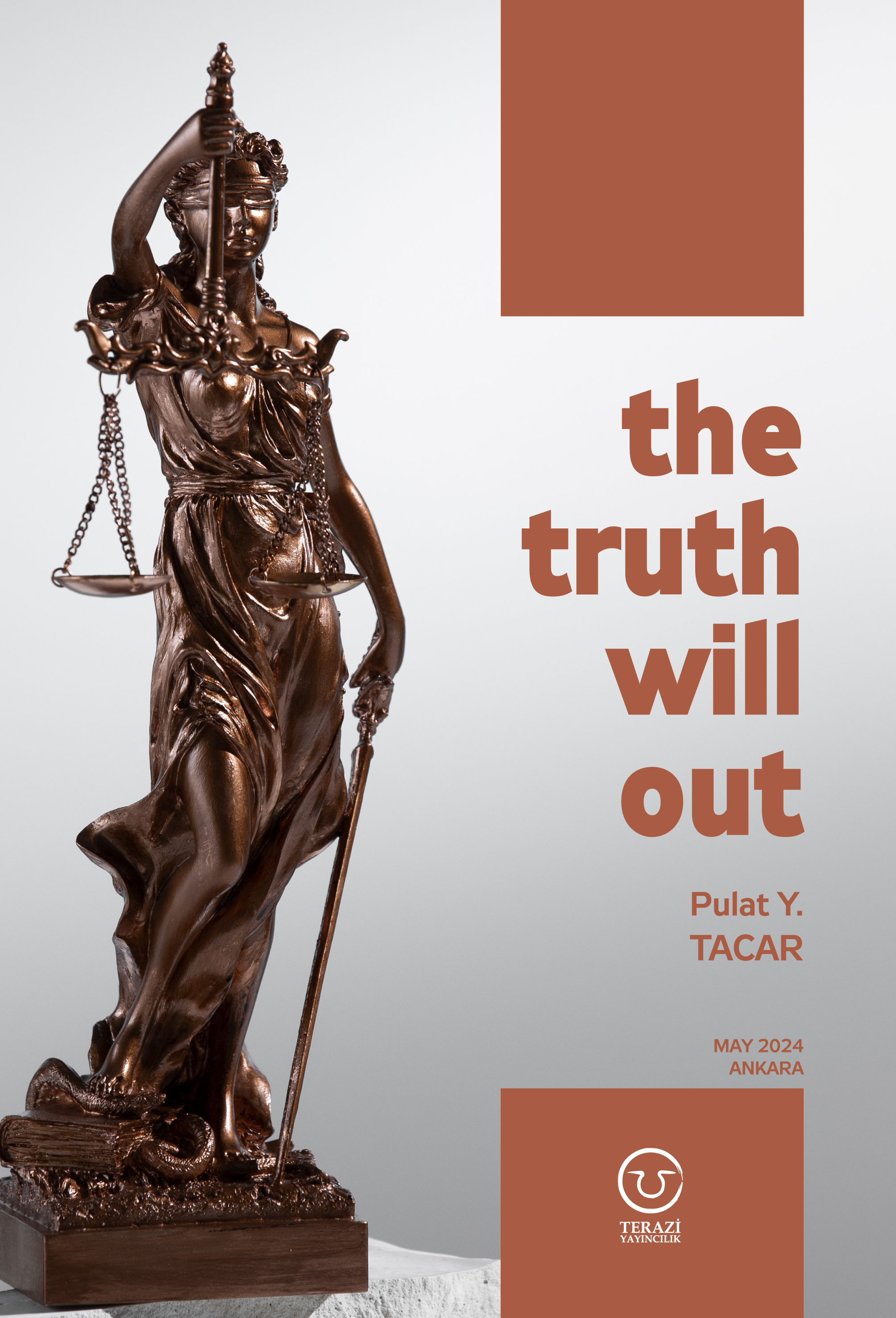
THE TRUTH WILL OUT -
27.03.2023
RADİKAL ERMENİ UNSURLARCA GERÇEKLEŞTİRİLEN MEZALİMLER VE VANDALİZM -
17.03.2023
PATRIOTISM PERVERTED -
23.02.2023
MEN ARE LIKE THAT -
03.02.2023
BAKÜ-TİFLİS-CEYHAN BORU HATTININ YAŞANAN TARİHİ -
16.12.2022
INTERNATIONAL SCHOLARS ON THE EVENTS OF 1915 -
07.12.2022
FAKE PHOTOS AND THE ARMENIAN PROPAGANDA -
07.12.2022
ERMENİ PROPAGANDASI VE SAHTE RESİMLER -
01.01.2022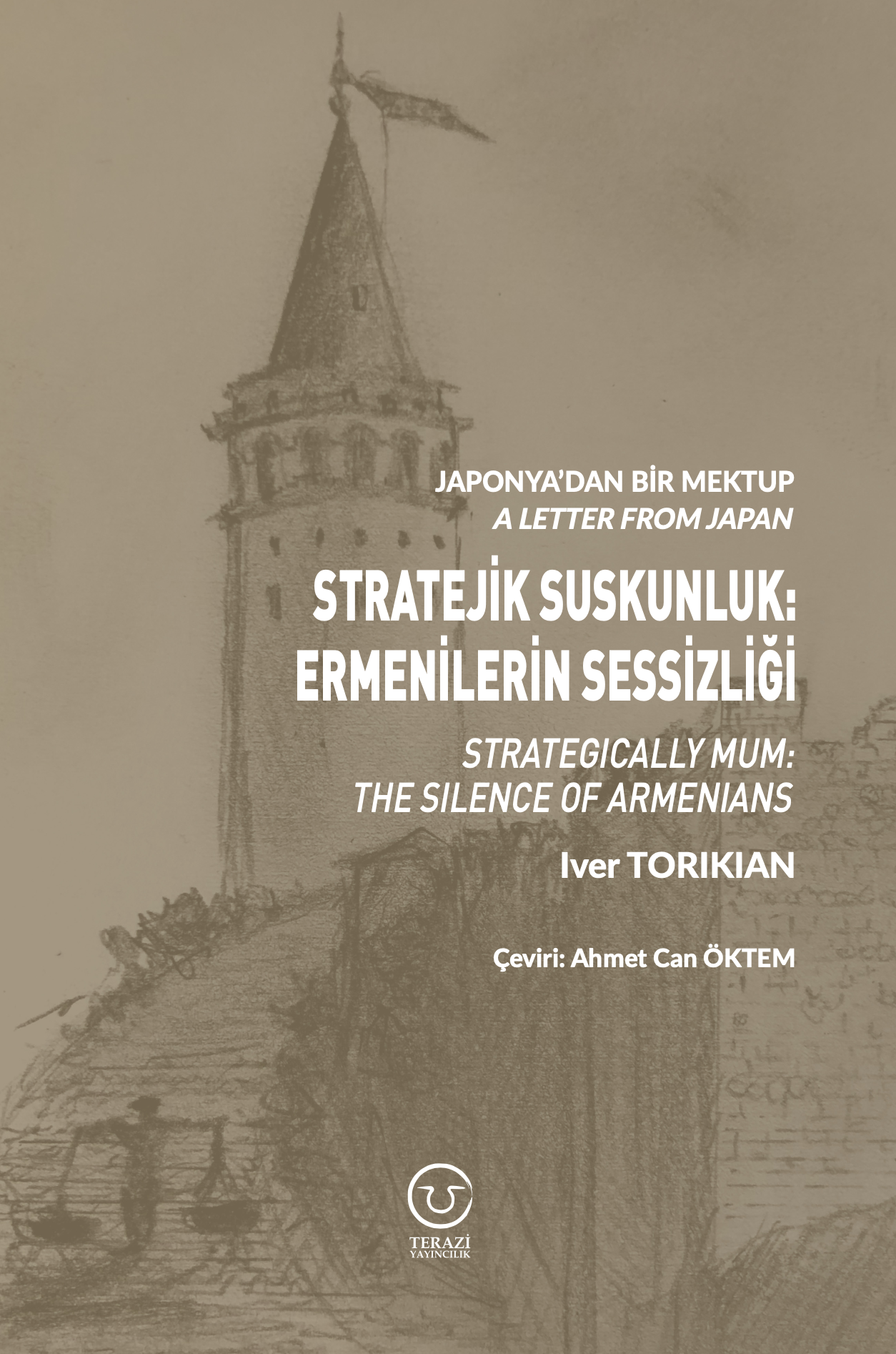
A Letter From Japan - Strategically Mum: The Silence of the Armenians -
01.01.2022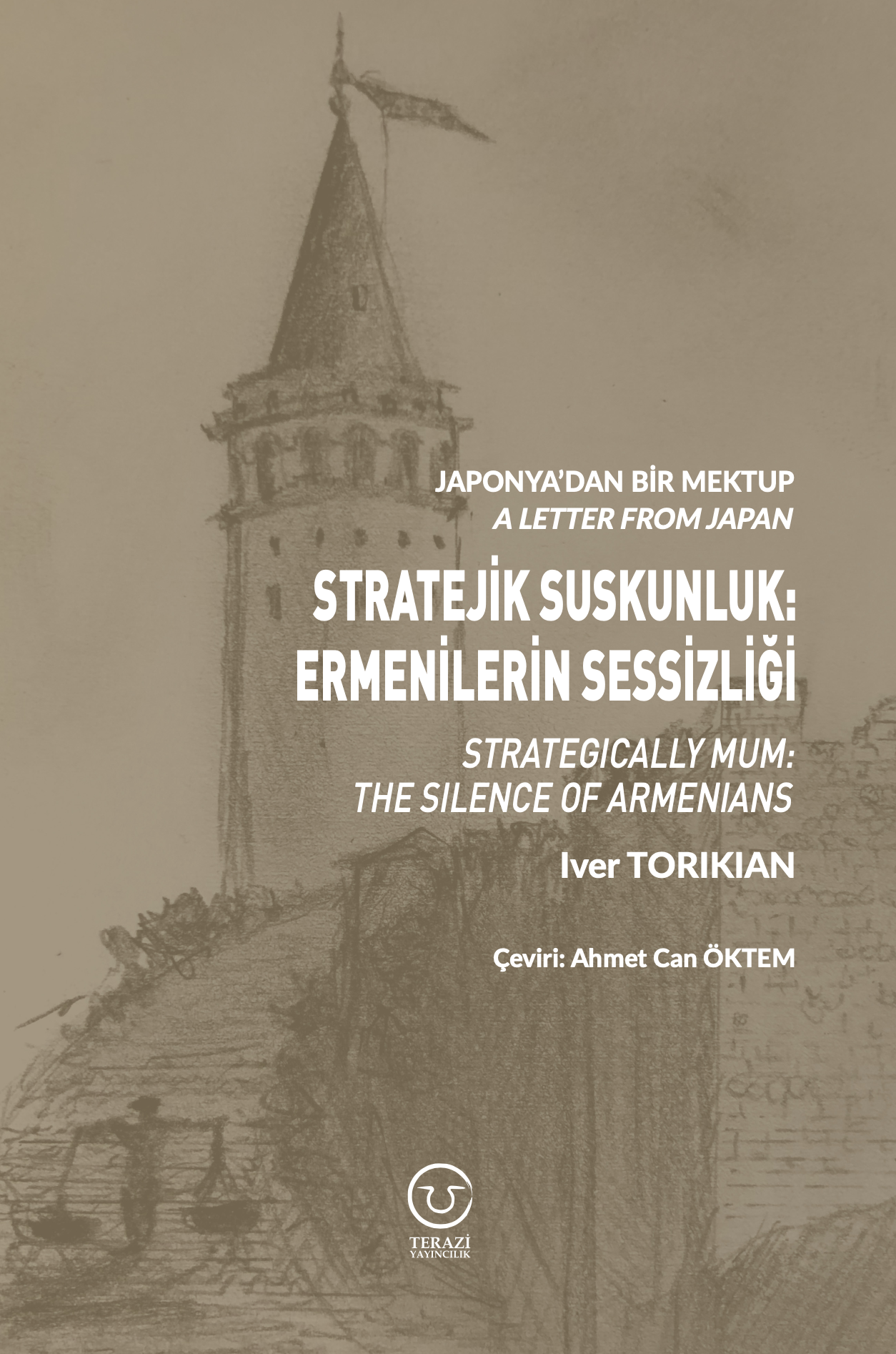
Japonya'dan Bir Mektup - Stratejik Suskunluk: Ermenilerin Sessizliği -
03.06.2020
Anastas Mikoyan: Confessions of an Armenian Bolshevik -
08.04.2020
Sovyet Sonrası Ukrayna’da Devlet, Toplum ve Siyaset - Değişen Dinamikler, Dönüşen Kimlikler -
12.06.2018
Ermeni Sorunuyla İlgili İngiliz Belgeleri (1912-1923) - British Documents on Armenian Question (1912-1923) -
02.12.2016
Turkish-Russian Academics: A Historical Study on the Caucasus -
01.07.2016
Gürcistan'daki Müslüman Topluluklar: Azınlık Hakları, Kimlik, Siyaset -
10.03.2016
Armenian Diaspora: Diaspora, State and the Imagination of the Republic of Armenia -
24.01.2016
ERMENİ SORUNU - TEMEL BİLGİ VE BELGELER (2. BASKI)
-
AVİM Conference Hall 24.01.2023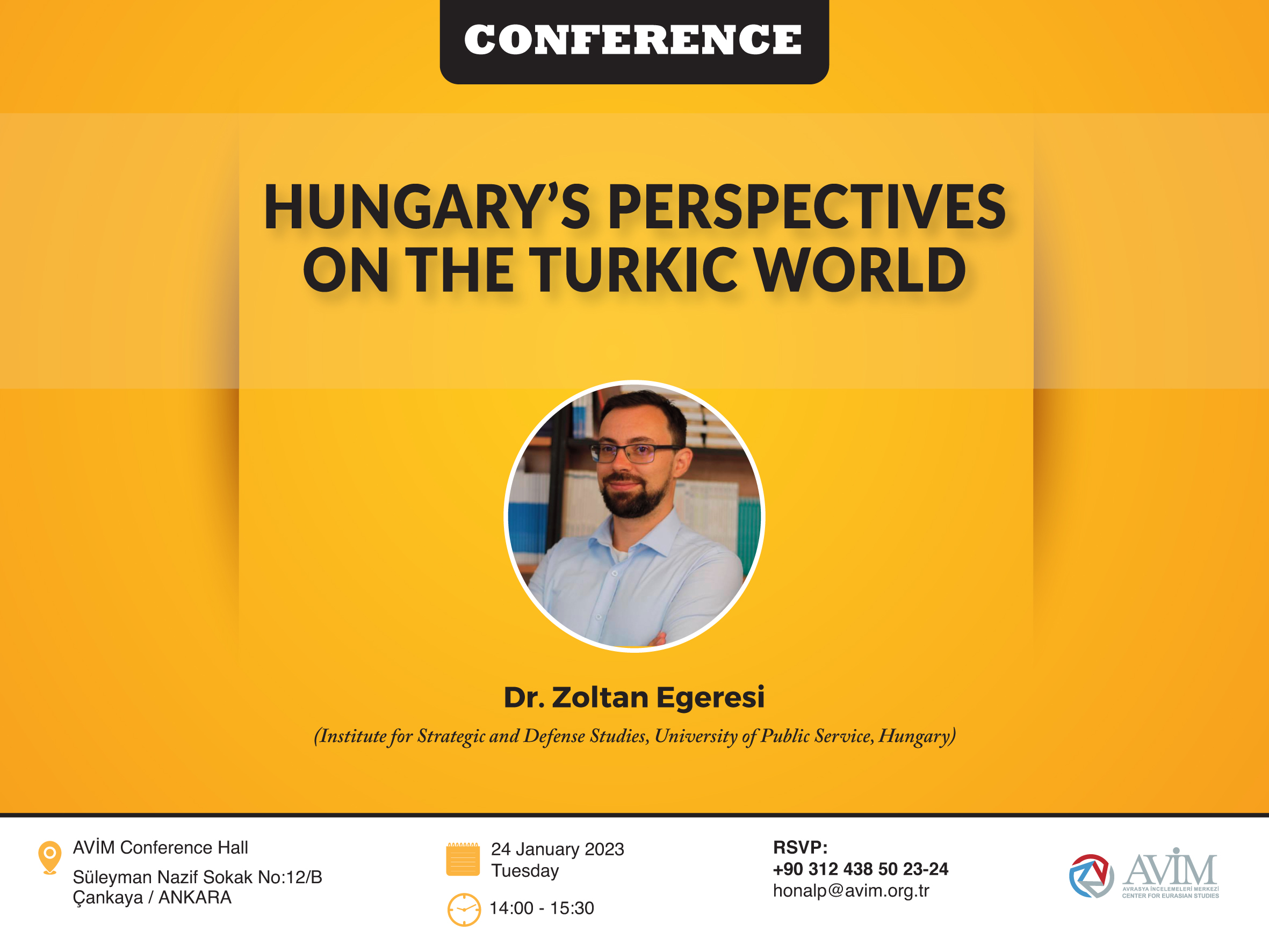
CONFERENCE TITLED “HUNGARY’S PERSPECTIVES ON THE TURKIC WORLD"








